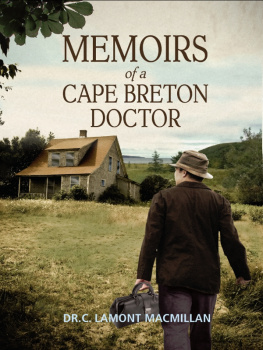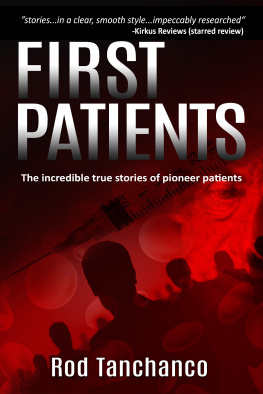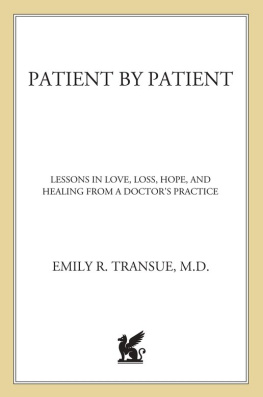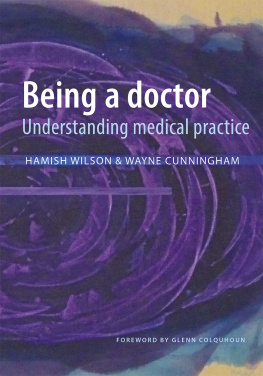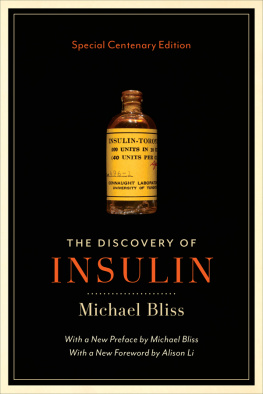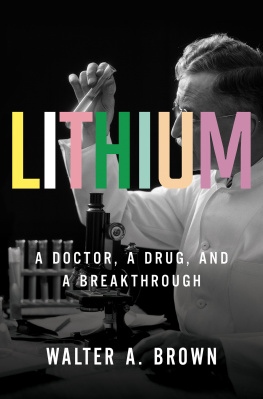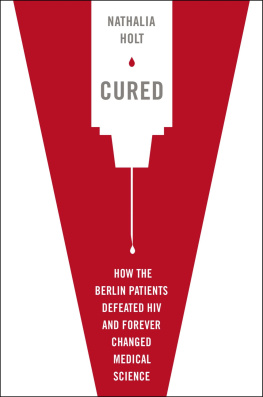SAINT GIUSEPPE MOSCATI
Antonio Tripodoro, S.J.
SAINT
GIUSEPPE
MOSCATI
Doctor of the Poor
Translated by Michael J. Miller
IGNATIUS PRESS SAN FRANCISCO
Original Italian edition:
Giuseppe Moscati: II medico dei poveri
Paoline Editoriale Libri
2004 by Figlie di San Paolo, Milan
Cover portrait by Rellie Liwag
Cover design by Riz Boncan Marsella
2015 by Ignatius Press, San Francisco
All rights reserved
ISBN 978-1-58617-945-8 (PB)
ISBN 978-1-68149-680-1 (EB)
Library of Congress Control Number 2014959901
Printed in the United States of America
CONTENTS
PREFACE
Much has been written about Giuseppe Moscati, especially after his canonization, which took place in Saint Peters Square on October 25, 1987. His reputation as a physician dedicated particularly to the pooror pro-bono doctor, as he was calledattracted everyones attention and gave rise to an indescribable wave of sympathy. The fact that he was a physician, to whose intercession countless graces of healing have been attributed, made him popular and spread devotion to him far and wide.
His tomb in the Church of the Ges Nuovo is the constant destination of pilgrimages, and the faithful can be found there at all hours of the day, praying and kissing the hands of the bronze statue and of the sculpted figure on the tomb where his body rests. These hands have been polished to a shine by the caresses of the devotees.
Furthermore, if we are to believe a great number of testimonies, which are published now and then in the bimonthly magazine Il Ges Nuovo , edited in Naples, the saint manifests his presence in dreams or in particular circumstances, announcing a healing or giving significant signs. The walls of the Moscati Room adjacent to the Church of the Ges Nuovo are covered with ex voto offerings, tangible signs of thanksgiving for the graces received.
Nor can we fail to mention the spiritual graces obtained through the intercession of the saintgraces that are more hidden, but no less numerous or important.
In reading his biography, we are fascinated by his personality, as were those who knew him and dealt with him while he was alive. It was impossible not to admire him and to be charmed by him. His teaching, his professional credentials, his detachment from money and his interest in the poor earned him respect, sympathy and affection. Even those who were far from the faith were won over by his work and, especially after his death, gave explicit testimony to that effect.
We all feel sometimes the need to meet someone whose life can show us higher values and trustworthy goals. Giuseppe Moscati was such a person. He is the man who was able to reconcile science and faith and who, by his work, communicated to others the fruits of this synthesis. In doing so he was benevolent, understanding, charitable and not attached to worldly goods. His writings, which have an unmistakable style, are always filled with lofty sentiments of great spiritual value that tend to communicate serenity and peace.
In composing these pages I relied very much on the testimonies of those who lived alongside the saint and had a relationship with him, especially his students and colleagues. These testimonies were always given under oath as part of the canonical processes for his beatification and canonization.
I hope that acquaintance with the saintly doctor, our contemporary, may bear good fruit for the readers and prompt them to imitate him. In todays world, which is rich in technological progress but often lacking in sensitivity for the poor and the suffering, his life can be a word to the wise and an encouragement to bring about a climate of solidarity and greater understanding.
CHRONOLOGY
7/25/1880 Giuseppe Moscati is born in Benevento, a son of Francesco and Rosa de Luca.
7/31/1880 He is baptized with the names Giuseppe Maria Carlo Alfonso.
1881-1884 His father is promoted to Judge of the Court of Appeals and moves with his family to Ancona; in 1884 he is appointed Presiding Judge of the Court of Appeals in Naples.
12/8/1888 Giuseppe receives his First Holy Communion from Monsignor Enrico Marano in the Church of the Handmaids of the Sacred Heart.
1889-1897 He enrolls in the secondary school affiliated with the Vittorio Emanuele Institute. In 1897 he earns a classical diploma and enrolls in the Faculty of Medicine.
12/21/1897 His father dies.
3/2/1898 He receives the Sacrament of Confirmation, conferred on him by Bishop Pasquale de Siena, Auxiliary Bishop of Cardinal Sanfelice.
8/4/1903 Giuseppe earns a degree in medicine. In that same year he wins the competition for temporary assistant at the Ospedali Riuniti.
6/2/1904 His brother Alberto dies.
1908 Regular Assistant Professor at the Institute of Physiological Chemistry.
1911 Helps victims of cholera. Temporary Assistant at the Ospedali Riuniti. Associate member of the Royal Academy of Medicine and Surgery.
1911-1923 Teaching at the Ospedale degli Incurabili (Hospital for Incurables).
11/25/1914 His mother dies.
1919 Head Physician of the Third Mens Ward of the Ospedale degli Incurabili.
10/14/1922 University Teaching Qualification for courses in general clinical medicine.
4/12/1927 Dies in his house on the via Cisterna dellOlio.
11/16/1930 Translation of his body to the Church of the Ges Nuovo in Naples.
7/6/1931 Beginning of the diocesan process of documenting his reputation for sanctity.
5/10/1973 Decree issued on his heroic virtues by the Congregation for the Causes of Saints.
11/16/1975 Beatification in Saint Peters Square.
11/16/1977 Translation of his body to the altar of the Visitation, in the Church of the Ges Nuovo.
4/28/1987 Approval of the miraculous healing of Giuseppe Montefusco of acute non-lymphoid leukemia.
10/25/1987 Canonization in Saint Peters Square.
1
From the Sabato to Vesuvius
Santa Lucia di Serino is a town of very ancient origin in the Italian province of Avellino. In its territory are found tombs from the third and fourth century B.C. and also remains of the Claudius Aqueduct, which supplied the Roman military port of Miseno. It is situated on the right bank of the Sabato River, which flows also through Benevento.
In Santa Lucia di Serino the Moscati family boasts of well-documented origins going back to the sixteenth century.
There, on October 12, 1836, was born Francesco Moscati, Giuseppes father, who took a degree in law at the University of Naples and had a brilliant career on the judicial bench. He served as a judge in the Court of Cassino, presiding judge of the Court of Benevento, judge of the Court of Appeals in Ancona and, lastly, presiding judge of the Court of Appeals in Naples. In Cassino he married Rosa de Luca, who was descended from the Marquis of Roseto. Their marriage was blessed by the Abbot of Monte Cassino, Father Luigi Tosti, a famous historian who is remembered in the events of the Italian Risorgimento : in 1849 he had exhorted Pius IX to renounce his temporal power as ruler of the Papal States.
The Moscatis had nine children: Giuseppe was the seventh.
The first five children were born in Monte Cassino: Gennaro, Alberto, the twins Maria and Anna, who died of diphtheria in 1875, and another Maria; in BeneventoAnna, who died four years after Giuseppe did; in AnconaEugenio and Domenico.
The Moscatis had moved to Benevento in 1877, when Francesco was promoted to presiding judge of the court, and they took up lodgings on the via San Diodato, in the vicinity of the hospital. After a few months they changed their residence and settled in an apartment on the via PortAurea, near the Arch of Trajan, in the Andreotti Palace, which was later acquired by the Leo family, the present owners. There, on July 25 in the year 1880, Giuseppe came into the world.
Next page

